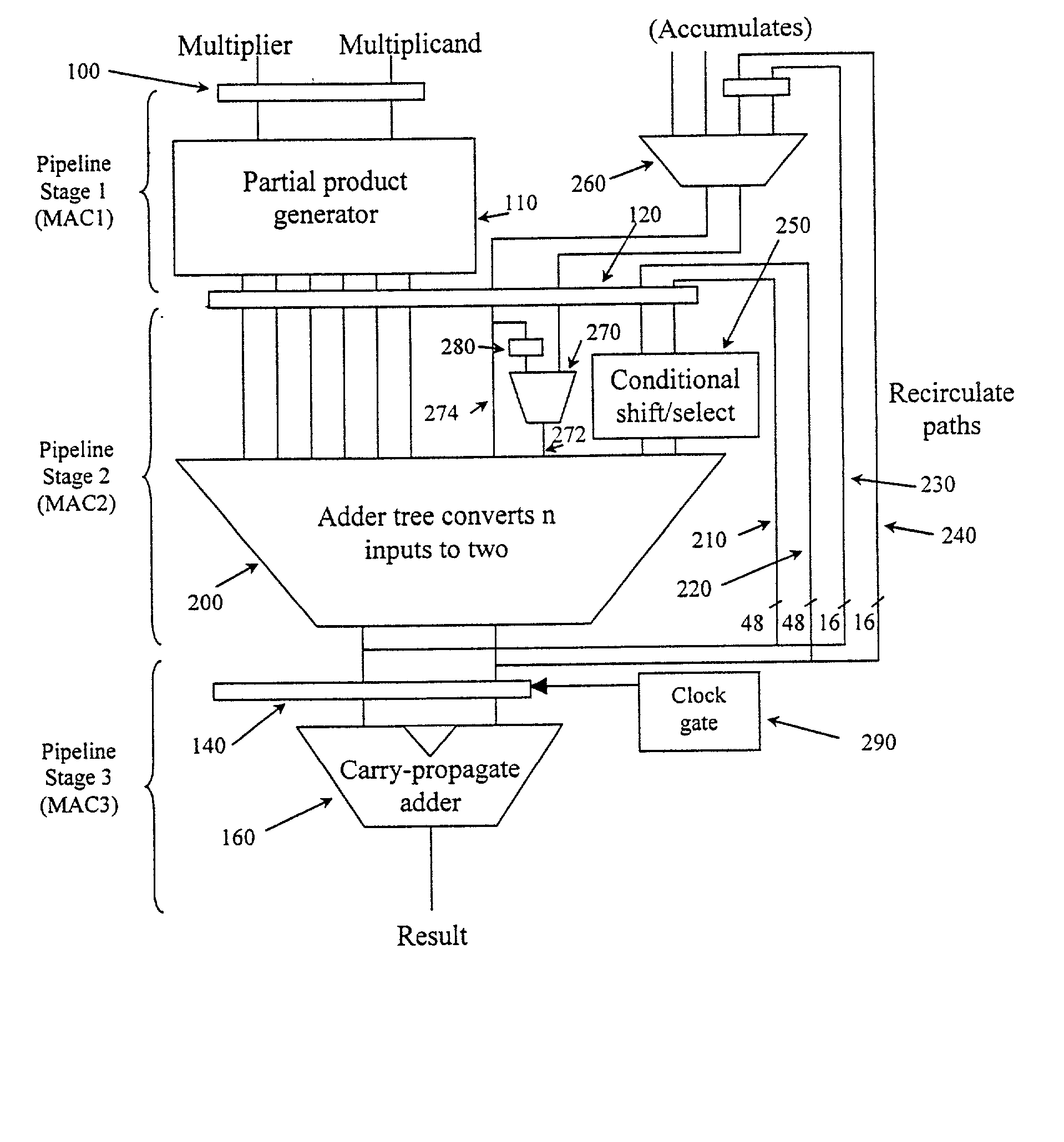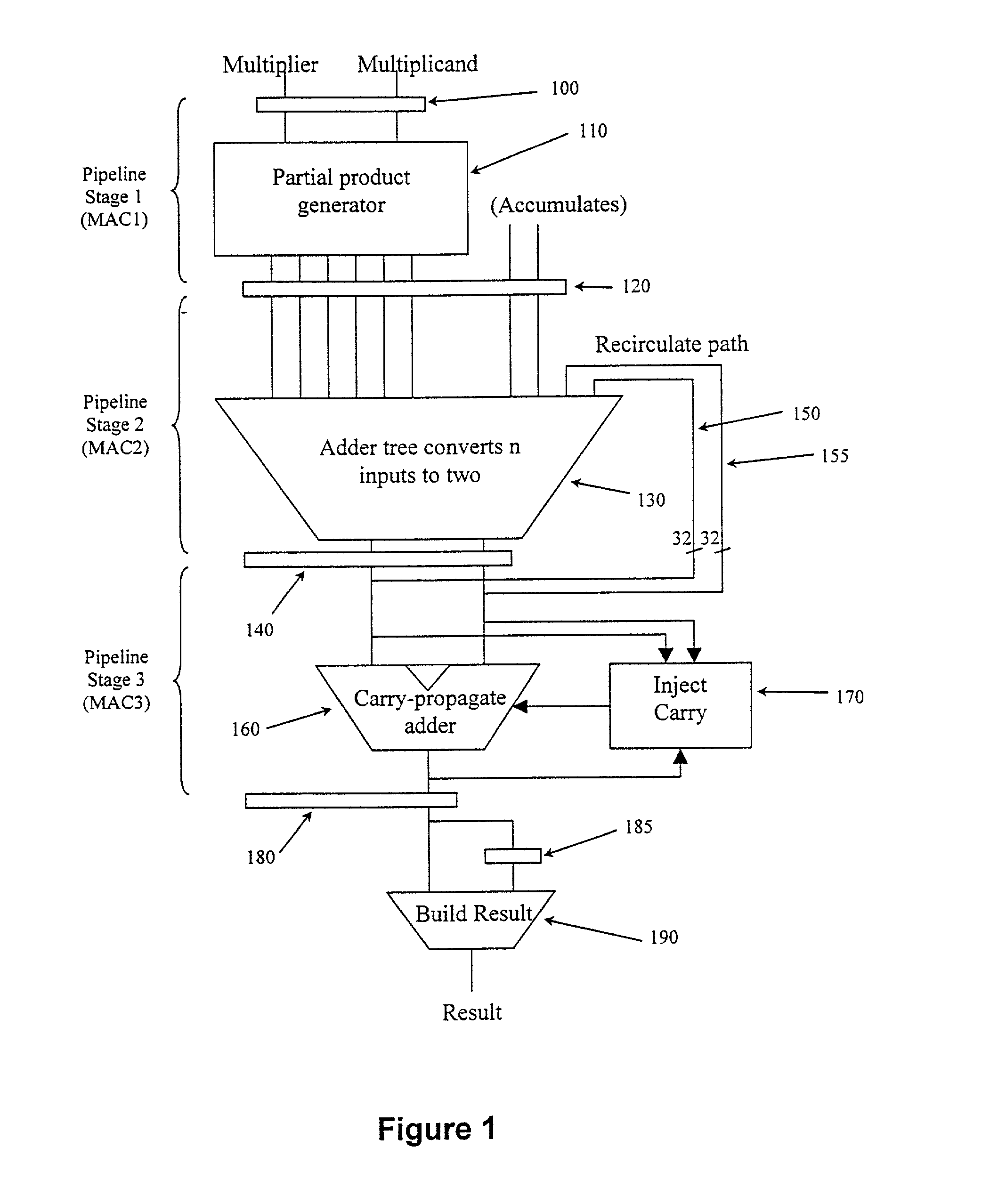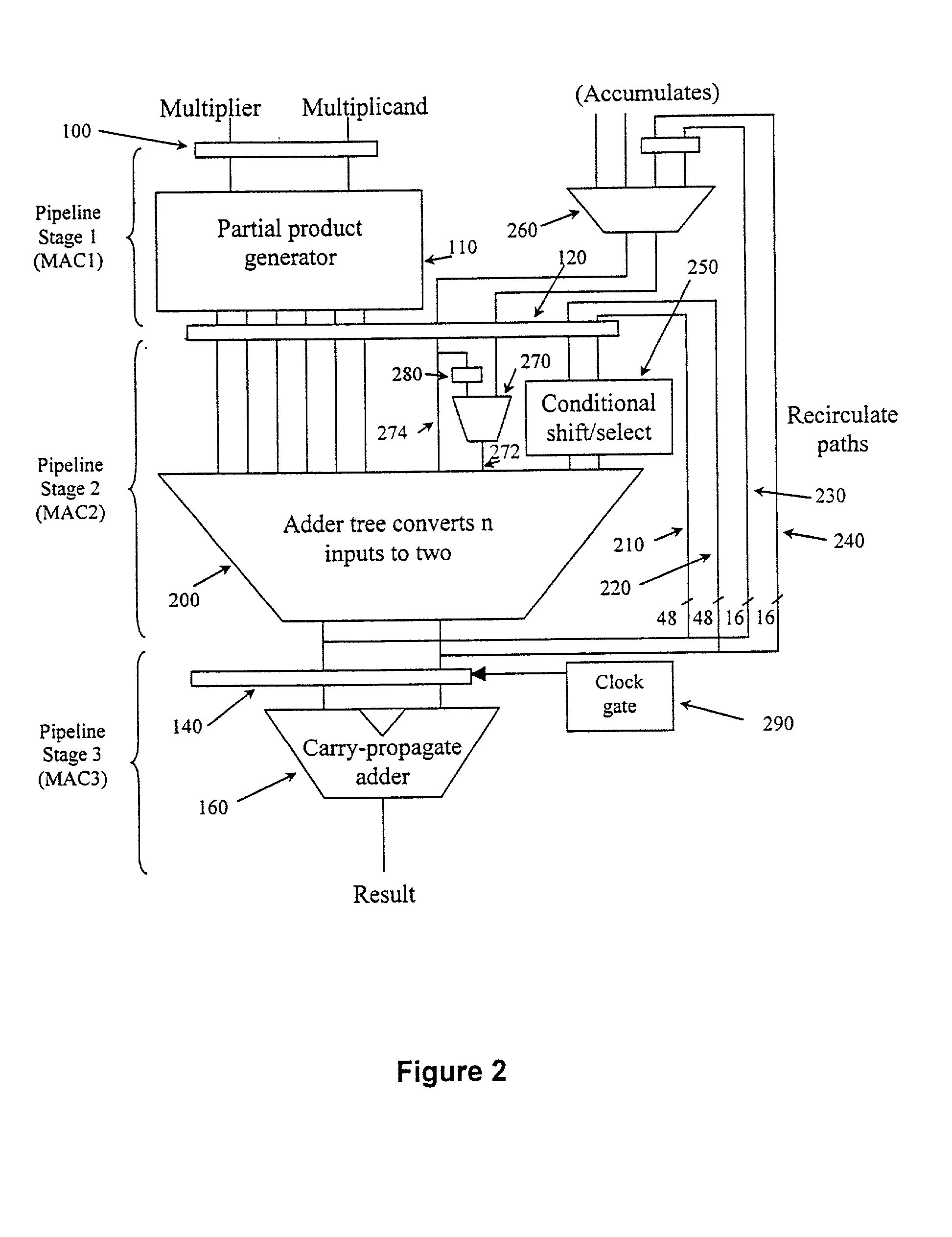Apparatus and method for performing multiplication operations
a multiplication operation and apparatus technology, applied in the field of data processing systems, can solve the problems of reducing performance, stalling cycles, and affecting the perceived speed of the prior art approach
- Summary
- Abstract
- Description
- Claims
- Application Information
AI Technical Summary
Benefits of technology
Problems solved by technology
Method used
Image
Examples
Embodiment Construction
[0048] FIG. 1 is block diagram illustrating a multiply-accumulate circuit that may be provided to execute multiply-accumulate instructions in a conventional manner. As can be seen from FIG. 1, the multiply-accumulate circuit basically comprises three pipelined stages, with some additional circuitry being provided after the third pipelined stage to generate a final multiply-accumulate result.
[0049] The multiply-accumulate circuit of FIG. 1 includes a partial product generator 110 which in combination with the adder tree 130 is able to produce the result for the multiplication of a W-bit multiplier by a W / 2 bit multiplicand. The partial product receives the W-bit multiplier and W / 2 bits of the multiplicand, and generates a series of partial products which are then added together within the adder tree 130 to generate the multiplication result. Accordingly two multiplication operations are required to perform the multiplication M.times.N, where both M and N are W-bit data words. For the...
PUM
 Login to View More
Login to View More Abstract
Description
Claims
Application Information
 Login to View More
Login to View More - R&D
- Intellectual Property
- Life Sciences
- Materials
- Tech Scout
- Unparalleled Data Quality
- Higher Quality Content
- 60% Fewer Hallucinations
Browse by: Latest US Patents, China's latest patents, Technical Efficacy Thesaurus, Application Domain, Technology Topic, Popular Technical Reports.
© 2025 PatSnap. All rights reserved.Legal|Privacy policy|Modern Slavery Act Transparency Statement|Sitemap|About US| Contact US: help@patsnap.com



